Research
Research
- Planning and Coordination Division
- General Services Division
- Technology Services Division
- Dept. of Agricultural Environment
- Dept. of Agricultural Biology
- Dept. of Agro-food Safety and Crop Protection
- Dept. of Agricultural Engineering
- Dept. of Agricultural Biotechnology
- National Agrobiodiversity Center
- Research Paper
Dept. of Agro-Food Safety and Crop Protection(농산물안전성부)
The Department of Agro-Food Safety and Crop Protection has been contributing to farm households by developing techniques for producing agro-foods which consumers can choose with confidence.
The Department of Agro-Food Safety and Crop Protection at the National Institute of Agricultural Sciences promotes technical development to support the production of safe agro-foods and fundamental research to achieve four main goals with the vision of 'Construction of a management foundation to produce safe agro-foods at the level of G7 developed countries'. The goals are: 1) development of safety management techniques for residual chemicals in agro-foods and agricultural environment, 2) development of integrated pest and weed management technology in response to climate change, 3) development of a pesticide risk assessment system for human & environmental toxicity and bioactivity, and 4) development of technology and GAP practices to ensure microbial safety.
The Department of Agro-Food Safety and Crop Protection consists of four divisions: the Residual Chemical Assessment Division, Crop Protection Division, Toxicity & Risk Assessment Division, and Microbial Safety Division. Each division has its own tasks. The main goal of Residual Agrochemical Assessment Division is comprehensive management of hazardous substances for the production of safe agricultural products. The Crop Protection Division is conducting research on the establishment of a comprehensive management system for pests and weeds found in crops and farmland. The Toxicity & Risk Assessment Division is carrying out the evaluation of pesticides for registration and research on the development of a management system for pesticide safety. Finally, the Microbial Safety Division is conducting research on the spread and expansion of GAP production technology and the reduction of harmful microorganisms in agri-foods.
Our research is centered on three main targets such as on-farm research, thorough customer management, and reinforcing publicity in real-time.
(1) Residual Chemical Assessment Division
To produce safe agro-food from various residual chemicals. it is necessary to integrate a hazardous substance management scheme which can ensure agro-food safety. Our division conducts specialized analysis and monitoring, and various programs to minimize the risk of residual chemicals such as pesticides in agro-food and agricultural environments.
1. Setting of pesticide safety standards, and distributing pesticide anti-drift manuals for unmanned aerial vehicles for crop protection
For the production of safe agricultural products, we set 1000 pre-harvest intervals (PHIs) of registrated pesticides and 400 temporary maximum residue limits (MRLs) every year. We have published a “Residue Definition in Soil and Crops” and "Pesticide Anti-Drift Manual" to address the problem of drift in agricultural fields. To ensure the reliability of data, we have revised the guidance document on crop field trials and analytical quality control and method validation procedures for pesticide residues analysis. We evaluate pesticide residue data and study the safe use of pesticides.

[Publication of the pesticide anti-drift manual and residue definition]
2. Introducing and distributing safe pesticide application manuals for the export of agricultural products
To address recent concerns regarding residual pesticides in our exported agricultural products, we have introduced safe pesticide application guidelines for 30 major export crops. These guidelines have been effectively used as valuable references in field education.

[Pesticide safety usage guidelines for exported agricultural products]]
3. Providing analytical techniques and proficiency testing for analysis of pesticide residues to local rural development agricultural centers:
Residual pesticide analysis is crucial for agricultural product safety management. We offer ISO-based proficiency testing to local rural development agricultural centers as a means to obtain reliable and accurate results for residual pesticide analysis. Additionally, we are engaging in research and development to create samples that conform to reference materials.
4. Monitoring of pesticides residues in agricultural environments
To maintain the consistent safety of both agricultural products and the environment, annual monitoring of pesticide residues is conducted in agricultural soils and water. Pesticide residue assessments are undertaken once every four years for orchards, paddies, facility fields, and upland areas. Additionally, 100 sites of both surface water and groundwater are evaluated annually.
-
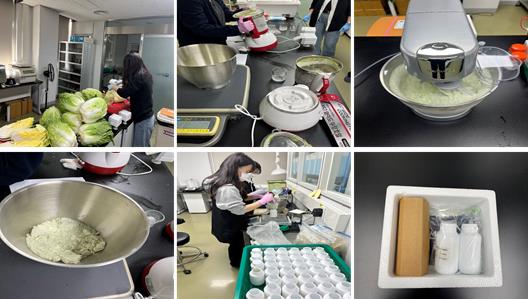 Development of proficiency test samples
Development of proficiency test samples
-
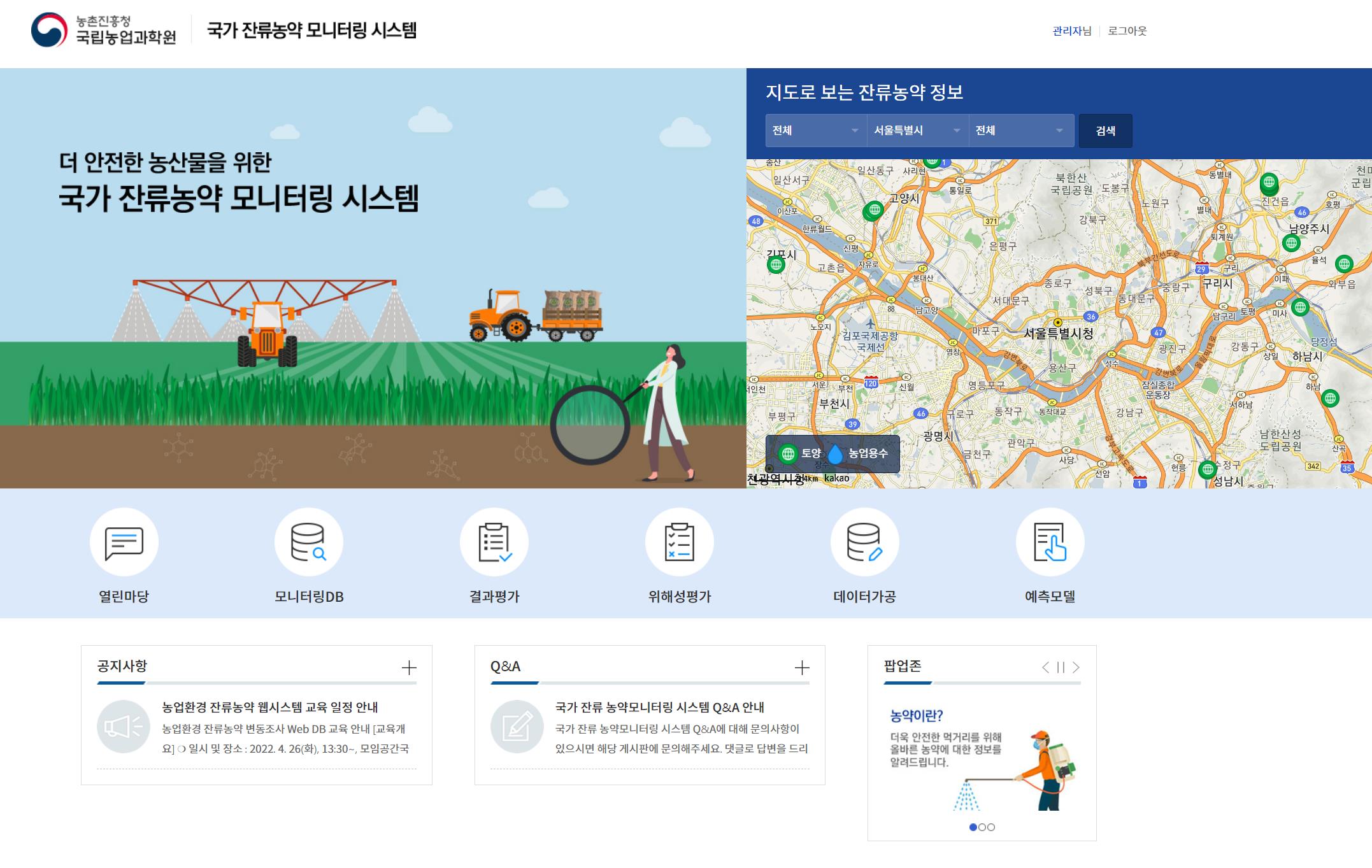 Monitoring database system
Monitoring database system
5. Development of technology for preventing unintentional contamination of rotational crops due to pesticide residue uptake
Since the implementation of the Positive List System (PLS), unregistered pesticides are managed at undetectable levels of 0.01 ppm. As a result, there has been an increase in unintentional contamination of rotational crops through persistent pesticides residue in soil. To solve this issue, we have developed a laboratory method for assessing soil-to-plant uptake, enabling the proactive prediction of potential pesticide translocation to rotational crops. This facilitates the establishment of an evaluation system to distribute safe agricultural products. Furthermore, we are improving safe use guidelines for soil-applied pesticides and developing the technology to minimize the risk of residual chemicals in agricultural environment.
(2) Crop Protection Division
The Crop Protection Division consists of five laboratories: the Plant Fungal Disease Lab., Insect Pests & Natural Enemies Lab., Weed Science & Nematology Lab., Pest Risk Assessment & Plant Virus Lab., and the Fire Blight Disease Lab.
1. Diagnosis and Management of Crop Fungal Diseases
Climate change and environmental shifts in agricultural ecosystems have led to a significant increase in the incidence of new emerging diseases in crops grown in Korea. In response to these changes, we have developed identification, diagnostic, and control methods for the causal agents of certain plant fungal diseases. Fusarium fujikuroi, which causes soybean Fusarium wilt, was reported for the first time in Korea. Additionally, we reported lance asiabell sclerotia rot caused by Sclerotinia sclerotiorum and potato Verticillium wilt caused by Verticillium dahliae for the first time in Korea. We have also developed specific primers for the diagnosis of benomyl-resistant Fusarium fujikuroi, which causes rice bakanae, establishing a rapid and accurate monitoring system. Furthermore, to select disease-resistant genetic resources, we have constructed a bioassay system to assess resistance to Fusarium wilt in soybeans and sclerotia rot in vegetables.
-
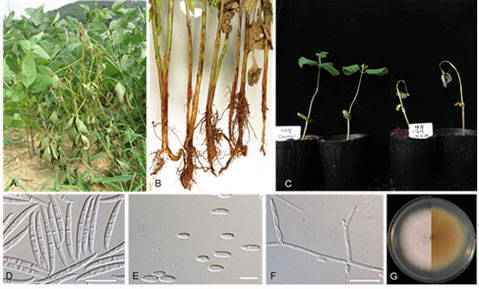 [Soybean Fusarium wilt caused by Fusarium fujikuroi]
[Soybean Fusarium wilt caused by Fusarium fujikuroi]
-
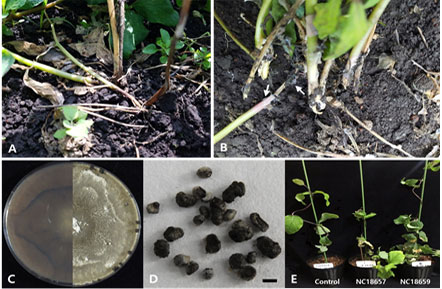 [Lance asiabell Sclerotia rot caused by Sclerotinia sclerotiorum]
[Lance asiabell Sclerotia rot caused by Sclerotinia sclerotiorum]
-
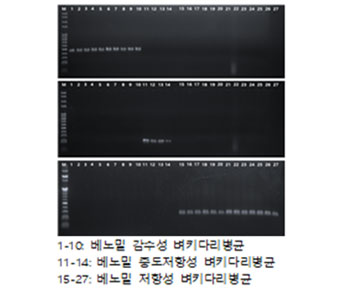 [PCR using specific primers for detection of benomyl resistant F. fujikuroi]
[PCR using specific primers for detection of benomyl resistant F. fujikuroi]
-
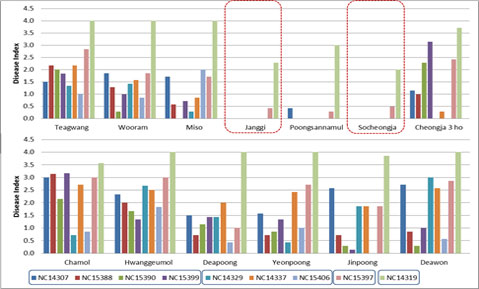 [Disease-resistant response of Korean soybean cultivars against Fusarium wilt using a seedling assay]
[Disease-resistant response of Korean soybean cultivars against Fusarium wilt using a seedling assay]
-
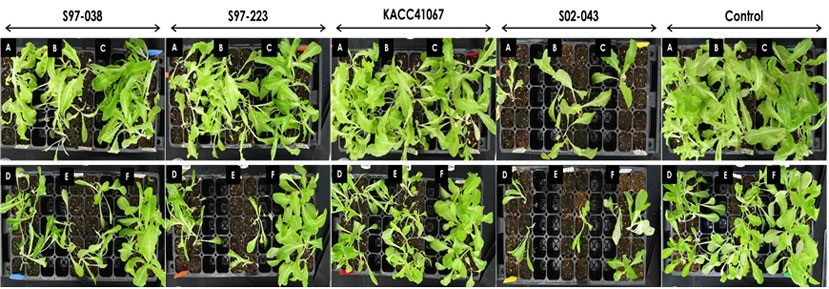 [Disease-resistant response of commercial lettuce cultivars against Sclerotia rot using a seedling assay]
[Disease-resistant response of commercial lettuce cultivars against Sclerotia rot using a seedling assay]
2. Development of a population dynamic model and control tactics for agricultural insect pests
For assessment of the impact of climate change and vulnerability to insect pests, we conducted investigations into the nationwide occurrence of the citrus flatid planthopper (Metacalfa pruinosa), the brown marmorated stink bug (Halyomorpha halys), and the tobacco cutworm (Spodoptera litura). We developed temperature-dependent development models for five different kinds of insects and produced detailed forecast data for them. An automated forecasting system called the "Smart Sky Net Trap" allowed us to collect precise migratory data for rice planthoppers, enabling the implementation of appropriate management measures each year. The collected insect samples were used to check the viruliferous rate. Various moth species, including the tobacco cutworm, were suspected to have migrated from China to Korea. We collected ecological information on them and analyzed their potential inflow, flying routes, overwintering habits, and impacts on domestic populations.
The fall armyworm (Spodoptera frugiperda) was first introduced to South Korea in June 2019. We established forecasting and management strategies for this insect. S. frugiperda were all genetically corn strains and cannot overwinter in Korea. They are presumed to migrate mainly from Zhejiang, China, and the Ryukyu Islands, Japan, from late April to early May. We conducted insecticide resistance monitoring, cross-resistance studies, and resistance dynamics research for greenhouse insect pests such as whiteflies, thrips, and aphids to establish a nationwide resistance management system.
We are also conducting research to discover native natural enemies and develop indoor breeding and application technologies for use by organic farmers. Mass breeding technology for Binodoxys communis, a parasitoid wasp, using soybean plants as banker plants, was developed for greenhouse aphid control. To control foreign invasive pests, we are introducing natural enemies from foreign countries and developing technologies for mass production and on-site application. Anastatus orientalis was introduced from China and successfully established to control Lycorma emelianovi. Recently, Neodryinus typhlocybae was introduced from Italy to control Metacalfa pruinosa, and a mass production system was established. It settled and spread in the field through outdoor release.
-
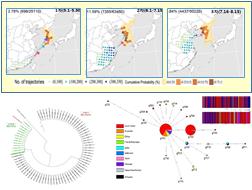 [Estimation of fall armyworm migration routes and genetic analysis]
[Estimation of fall armyworm migration routes and genetic analysis]
-
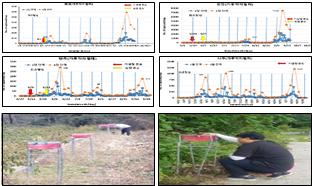 [Daily monitoring of Phthorimaea operculella using an auto-recording pheromone trap]
[Daily monitoring of Phthorimaea operculella using an auto-recording pheromone trap]
-
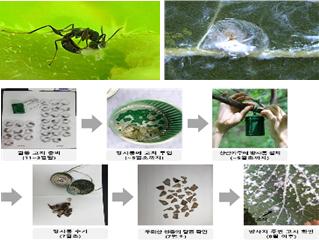 [Mass rearing and release technology for Neodryinus typhlocybae]
[Mass rearing and release technology for Neodryinus typhlocybae]
3. Management of plant-parasitic nematodes and weeds
Plant-parasitic nematode damage is gradually increasing in many crops due to climate change and continuous cultivation of single crops. To deal with this problem, we have conducted research on developing new diagnostic techniques and related integrated pest management (IPM) strategies. We developed a novel diagnostic kit that can detect two species of cyst nematodes simultaneously. To minimize damage to cyst nematodes, we have researched IPM strategies for controlling cyst nematodes in Kimchi-cabbage fields, including the use of chemical nematicides and nematicidal cover crops.
It has been reported that 619 weed species occur in agricultural fields. Since 1998, herbicide-resistant (HR) weeds have emerged in rice fields and 14 species are currently reported. We have studied mechanisms of herbicide-resistance and developed management strategies for paddy weeds. This strategies have been provided to farmers. We have recently received complaints about the emergence of HR weeds in fields, not just in rice fields, as well, so we are conducting research into the mechanisms of glyphosate and/or glyfosinate resistance for Acalypha australis L. to develop management strategies for glyphosate- and/or glyfosinate-resistant weeds. In addition, due to changes in cropping systems and climate change, weeds that were not previously problematic are now becoming issues, and invasive alien weeds are spreading in agricultural fields, leading to problems. Therefore, we have selected the top 20 species occurring in agricultural fields in response to these environmental changes and are monitoring changes in their populations.
-
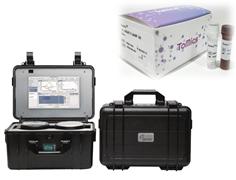 [Develpoment of a simultaneous diagnostic kit for two cyst nematodes]
[Develpoment of a simultaneous diagnostic kit for two cyst nematodes]
-
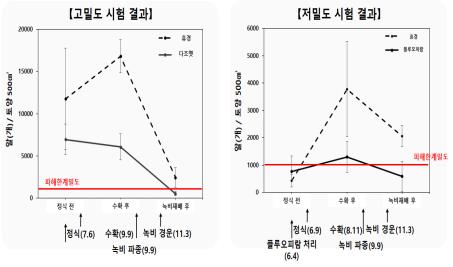 [Establishment of an IPM for cyst nematodes in kimchi cabbage fields]
[Establishment of an IPM for cyst nematodes in kimchi cabbage fields]
-
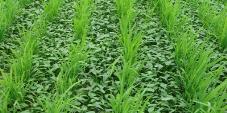 Monochoria vaginalis
Monochoria vaginalis
-
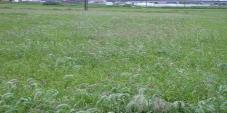 Echinochloa crus-galli
Echinochloa crus-galli
-
 Schoenoplectiella juncoides
Schoenoplectiella juncoides
-
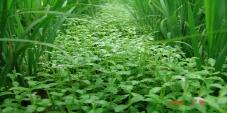 Lindernia dubia
Lindernia dubia
- [Four major herbicide resistant weeds in rice fields]
4. Establishment of a customized management system to reduce damage from crop viruses
As the organization in charge of plant virus genetic resources, we are responsible for deposition, registration, preservation, and management to secure the diversity of and to support research on domestic plant virus genetic resources. As of 2022, 1,054 plant viruses from 187 species have been deposited and preserved, and standard strains of 22 plant viruses are being selected and distributed to standardize plant virus research. Infectious clones have been constructed to study the virus-resistant varieties breeding and control of plant viruses. In addition, a bioassay for resistance evaluation was established using standard strains of the tomato spotted wilting virus (TSWV) and pepper mild mottle virus (PMMoV). In order to prepare a precise distribution map for nationally managed viruses (virus change depending on the year; 7 viruses in 2023), we have developed and disseminated the diagnostic techniques necessary for distribution survey and early diagnosis purposes. By means of a pest risk assessment, the risk of newly emerging viruses in Korea is evaluated, and distribution surveys and management manuals are being developed for viruses of medium or higher risk. We are carrying out tasks such as investigating and diagnosing newly introduced crops, analysis of the interaction mechanism between plant virus-insect vector-intermediate plants, and diagnosis services for agricultural sites, as well as collecting image information for viral diseases occurring in major crops (tomatoes, peppers, melons, watermelons, melons, beans, cabbages, sweet potatoes, and Chinese cabbages) and using AI deep learning to determine plant viral diseases and physiological disorders. In order to prevent the inflow of foreign high-risk plant virus diseases into Korea in advance and to develop early counter measures, about 300 high-risk viruses have been selected, listed, and their data been collected. We have also prepared a diagnosis and management manual for high-risk plant viruses of major crops.
-
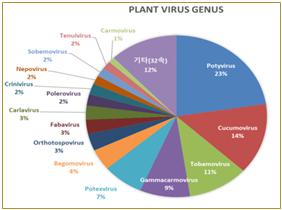 [Plant virus genetic resources]
[Plant virus genetic resources]
-
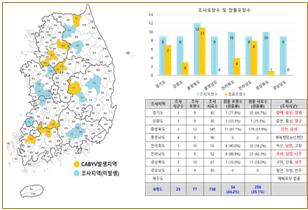 [Distribution map of nationally managed viruses]
[Distribution map of nationally managed viruses]
-
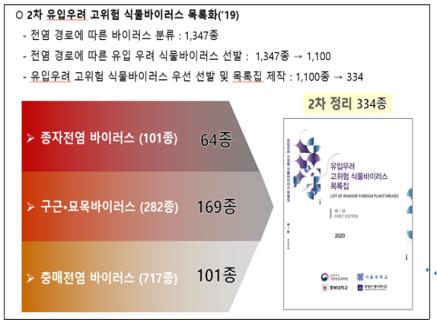 [Listing of inflow-concerned high-risk viruses]
[Listing of inflow-concerned high-risk viruses]
-
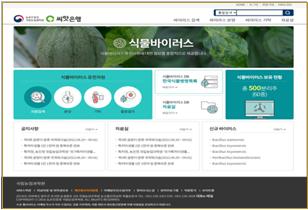 [Establishment of a plant virus online management system]
[Establishment of a plant virus online management system]
5. Management of fire blight disease in apples and pears
To establish the cause of the fire blight outbreak in apples and pears in Korea in 2019, we investigated the situation of thirty fire blight-infected orchards and interviewed farmers to determine the cultivation characteristics. This fire blight occurred mostly in orchards that had been infected more than two years beforehand. The cause of this was a series of factors as follows: ① Farmers did not know the symptoms of the disease properly. ② It is presumed to have spread from the first occurrence to surrounding orchards via flower-visiting insects or farmers and ③ spreading to short or long distances via the same cultivator or co-farmer. ④ It is presumed that this series of processes repeated in the next area of spread, and then disease reports increased as farmers became aware of the fire blight. To minimize the spread of fire blight in Korea, it is recommended to introduce thorough education of farmers in early diagnosis and quantitative detection technology that can diagnose even symptom-free plants as well as chemical or biological spraying systems suitable for domestic cultivation methods that mainly produce large fruits, plus the molecular epidemiological studies of pathogens.
To develop diagnostic technology to advance quarantine bacterial diagnosis and genetic diversity distribution investigation, we establish advanced precision-based technology for predicting outbreaks connected with genome and microbiome information by excavating indicator microorganisms. Recently, we developed a diagnostic quantitative analysis method (qRT-PCR) to differentiate between Erwinia amylovora and Erwinia pyrifoliae for early and precise diagnosis of fire blight, making it possible to reduce the diagnostic time required from more than 60 hours previously to within 1-1.5 hours. It can detect up to 100 individuals, significantly improving precision.
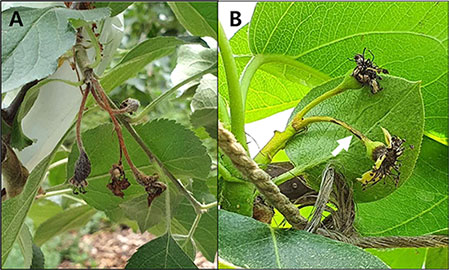
[Symptoms of the blossom blight of apples (A) and pears (B); the narrow white sign is similar to a pear scab symptom]
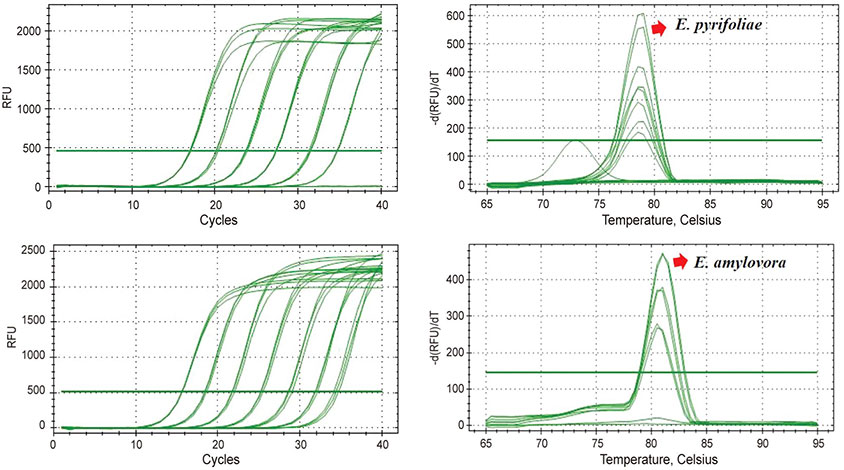
[Development of Real-time PCR assay for Erwinia amylovora and E. pyrifoliae]
(3) Toxicity & Risk Assessment Division
Pesticides are one of the most stringently regulated substances in Korea under the Pesticides Management Act. The Toxicity and Risk Assessment Division is one of the branches of the Department of Agro-Food Safety and Crop Protection, and reviews and assesses the registration dossiers submitted by pesticide and organic agro-material companies. Our mission is to prevent unacceptable risks to humans and the environment from pesticide exposure, as well as to select effective pesticides to target pests. To accomplish this goal, each pesticide and organic agro-material undergoes a series of scientific evaluations to determine if it meets current health and environmental standards. Only those agro-material products that pass this assessment can be accepted for use in Korea.
The RDA's involvement does not end after an agro-material product including a pesticide is on the market. Both the pesticide's qualities and how it is used are monitored through a series of education, compliance, and enforcement programs. Furthermore, after a pesticide has been on the market for several years, the RDA conducts another evaluation. It re-evaluates the pesticide using the latest scientific methods and information to determine if it continues to meet the current health and environmental standards and thus whether it can continue to be used in Korea. Pesticides are re-evaluated every ten years.
Finally, we also carry out scientific research such as animal alternative tests and honeybee and fish toxicity tests for the purpose of upgrading the evaluation system as well as ensuring the international harmonization of our system.
1. Evaluation of pesticide registration and distribution applications from companies
To ensure top-quality pesticide registration and distribution procedures, a comprehensive evaluation of safety issues pertaining to applications and all types of documents and samples are conducted, and a Pesticides Professional Committee is held for further review purposes.
-
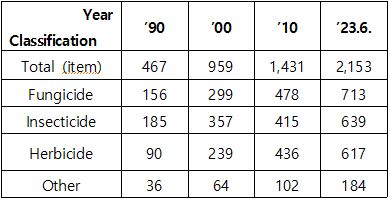 [Status of pesticide registrations]
[Status of pesticide registrations]
-
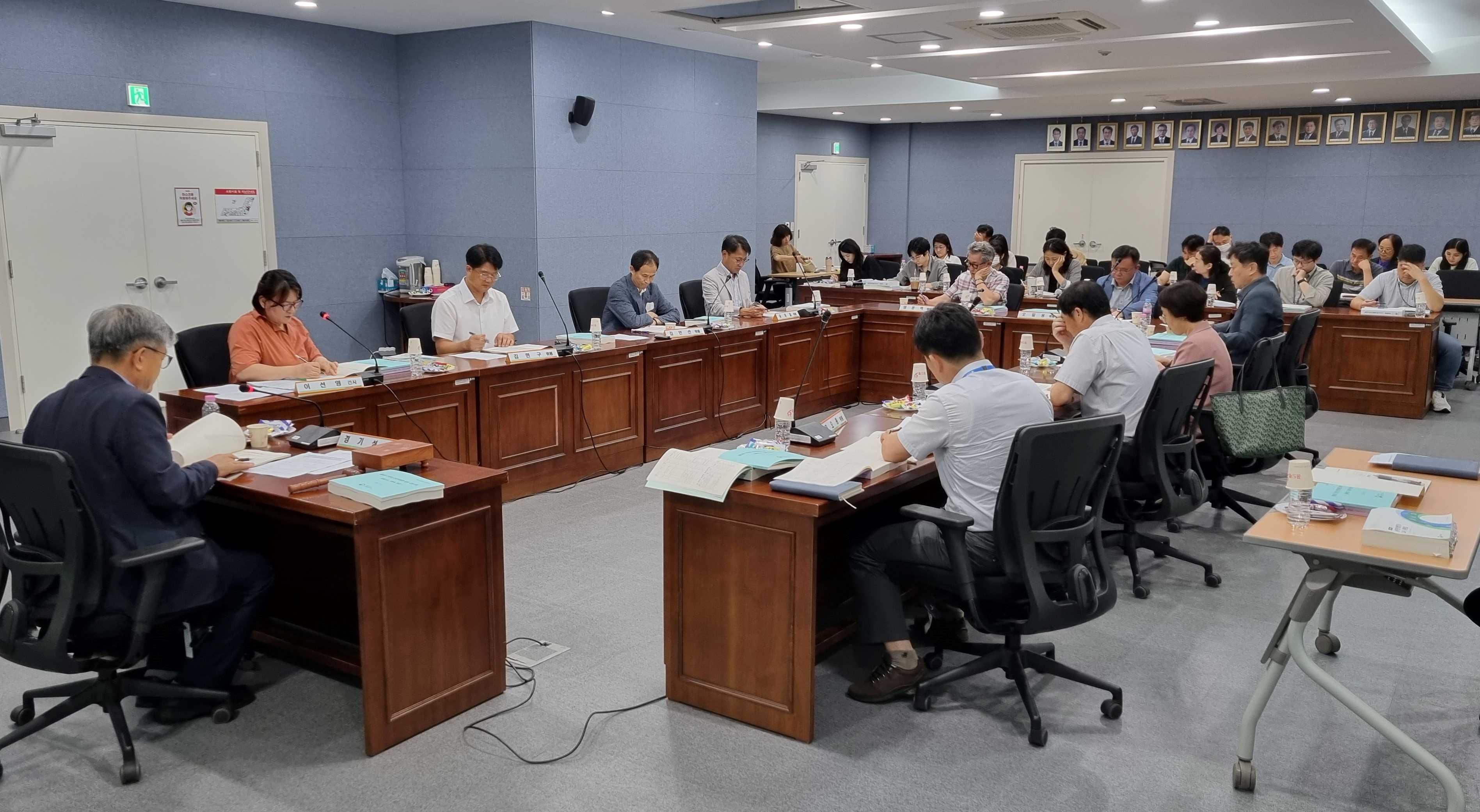 [Pesticides Professional Committee]
[Pesticides Professional Committee]
2. Human toxicity and risk assessment advancement for pesticides
Toxicity and risk assessment of pesticides is being carried out for authorization on consumers and agricultural operators. The Acceptable Daily Intake (ADI) of 460 and Acceptable Operator Exposure Level (AOEL) of 320 active ingredients have been established. The toxicity category for 3,400 pesticides has been classified according to the degree of toxicity. In addition, various studies such as those on animal alternatives are being carried out for purposes of the advancement of the evaluation system and to ensure international harmonization. A human health risk assessment has also been conducted to assess the risk to people who use pesticides, and the system is being improved by the establishment of cautions and criteria on use restrictions.
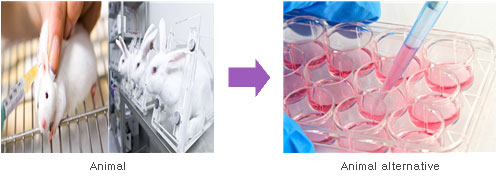
[Acute dermal and eye irritation study]

[Risk assessment of agricultural operator exposure to pesticides]
3. Environmental toxicity and risk assessment research
Our lab evaluates the probability that pesticides on the market may cause harmful effects on the environment and wildlife by reviewing pesticide registration data on non-target aquatic and terrestrial organisms according to the Korean Pesticide Control Act. We are also carrying out several research projects to improve ecotoxicological risk assessment and develop new test methods as research products. Currently, our studies are mainly related to the toxicity assessment of pesticides to pollinators, zebrafish embryos, and chironomids. We have been maintaining a properly functioning aquarium system for fish (zebrafish, Cyprinus Carpio, Oryzias Latipes, and Misgurnus anguillicaudatus) and cultivation systems for daphnia, chironomids, and earthworms for ecotoxicity tests.
-
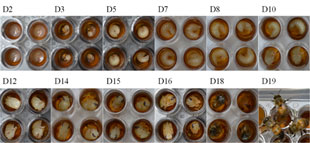 [Honeybee larval toxicity test]
[Honeybee larval toxicity test]
-
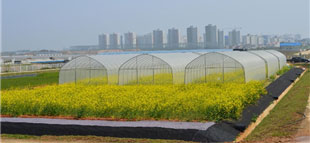 [Honeybee semi-field test]
[Honeybee semi-field test]
-
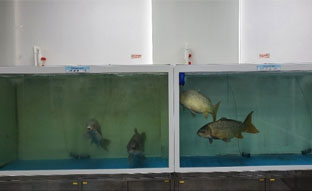 [Aquarium system for carp]
[Aquarium system for carp]
-
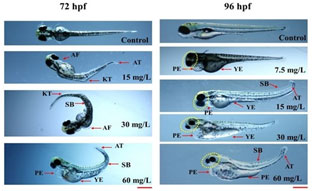 [Zebrafish embryo toxicity test]
[Zebrafish embryo toxicity test]
4. Establishment of test guidelines and standards to evaluate efficacy and crop safety
Each pesticide must not only possess control effects to target pests but have minimal side effects such as phytotoxicity to crops. As such, we have established test guidelines and proper standards to evaluate efficacy and phytotoxicity in the pesticide registration process. A PLS (positive list system) has been fully enforced in Korea since 2019, and we are evaluating a large number of pesticides for their efficacy and crop safety for small area cultivation crops. Pesticides are classified according to the mode of action of ingredients by the Resistance Action Committee (RAC) and we apply label criteria to each pesticide by labeling the mode of action. We have also introduced a pesticide classification system in order to reduce resistance development by avoiding successive use and limiting the number of applications of the same pesticide on the same site of action in the same field. We also plan to establish a reasonable pesticide water volume for crops and efficacy test method for spraying equipment (ex. agricultural drones) to ensure proper use of pesticides.
-
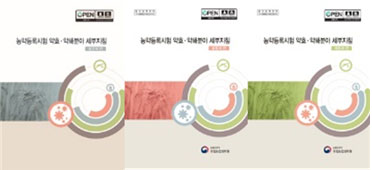 [Guidelines for pesticide registration trial of efficacy and phytotoxicity]
[Guidelines for pesticide registration trial of efficacy and phytotoxicity]
-
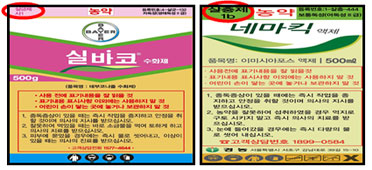 [Labelling the mode of action]
[Labelling the mode of action]
-
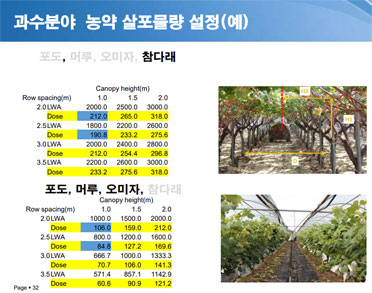 [Setting of pesticide water volume]
[Setting of pesticide water volume]
-
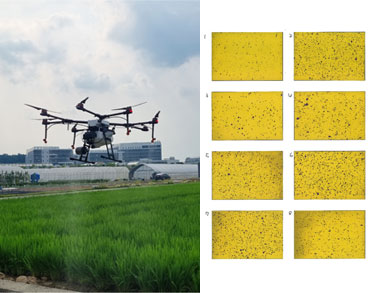 [Agricultural drone spraying test for aerial application guidelines]
[Agricultural drone spraying test for aerial application guidelines]
(4) Microbial Safety Division
In agri-food, foodborne illnesses can occur at any stage of production or distribution and pose a health risk as well as a safety concern. In order to prevent them, it is necessary to develop certain skills such as monitoring, diagnosis of the cause of the hazard, and effective control measures. The Microbial Safety Division deals with microbial hazards and focuses on research and technology development to ensure the microbial safety of agri-food production.
1. Development of hygienic practices to support the GAP system and exports
Good Agricultural Practices (GAP) is a prevention-orientated food safety system designed to manage hazards such as harmful microorganisms that can persist in the agricultural environment and in agricultural products. To support the GAP system, we have developed hygiene management methods for the monitoring, sanitization, and detection of microbial hazards in agricultural products. We also contribute to the export of safe agricultural products by identifying and managing microbial hazards at production sites.
-
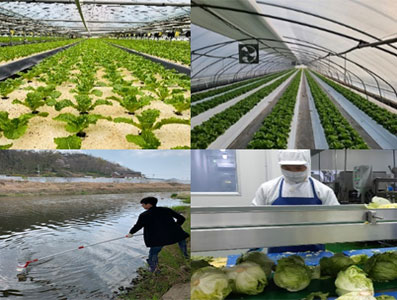 [Monitoring of microbe hazards in agricultural environments and agri-food]
[Monitoring of microbe hazards in agricultural environments and agri-food]
-
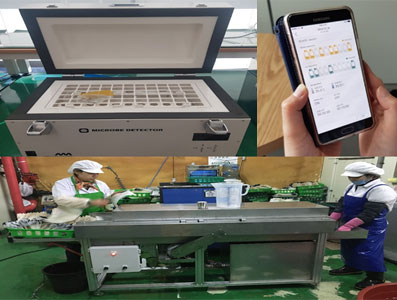 [Rapid detection and hygiene of hazardous microbes in agri-food processing facilities]
[Rapid detection and hygiene of hazardous microbes in agri-food processing facilities]
2. Mycotoxin research in agro-crops
Mycotoxins occur in a variety of crops, including cereals. Mycotoxins are difficult to remove once they are produced, so preventive control is an effective strategy to reduce contamination. In order to develop technologies to prevent and control the occurrence of mycotoxins in agricultural crops, we are investigating the occurrence of mycotoxins and toxic molds in major grains such as wheat, barley, and rice as well as other crops that are susceptible to mycotoxin contamination. We are also identifying critical control points for mycotoxins during the production, harvest, and storage of agricultural crops and developing prevention and mitigation technologies.
-
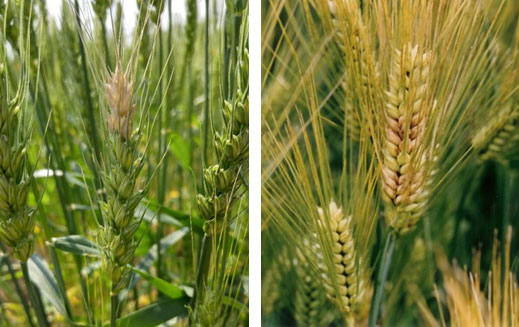 [Fusarium head blight in barley and wheat]
[Fusarium head blight in barley and wheat]
-
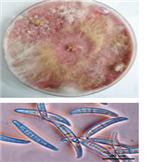 [Culture and macroconidia of Fusarium asiaticum]
[Culture and macroconidia of Fusarium asiaticum]
-
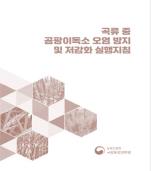 [Guidelines for prevention and control of mycotoxin contamination in cereals]
[Guidelines for prevention and control of mycotoxin contamination in cereals]
3. Detection and control of pathogenic viruses in agricultural environments and products
Agricultural products can be contaminated with pathogenic viruses through environmental factors such as water, soil, and infected handlers. To control viruses in agricultural environments and products, we monitor viral contamination and develop control methods to inactivate viral particles. We also develop guidelines for the detection of viruses in agricultural water and provide them to organizations involved in agricultural safety.
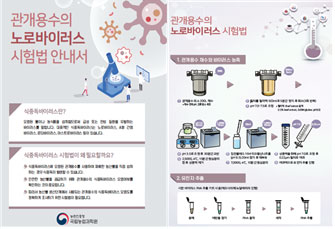
[Guidelines for detecting viruses in irrigation water used for cultivation]
4. Molecular detection and characterization of foodborne pathogens
We detect the presence of foodborne pathogens and investigate potential threats to food safety. This includes molecular analysis, microbiological testing, and PCR-based detection in agricultural products and the environment. We also identify the root causes of pathogen contamination using WGS (whole genome sequencing) approaches, toxicity profiling, pathogenicity characterization, and antimicrobial resistance monitoring.
-
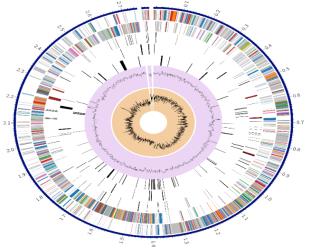 [Circular genome visualization of foodborne pathogens]
[Circular genome visualization of foodborne pathogens]
-
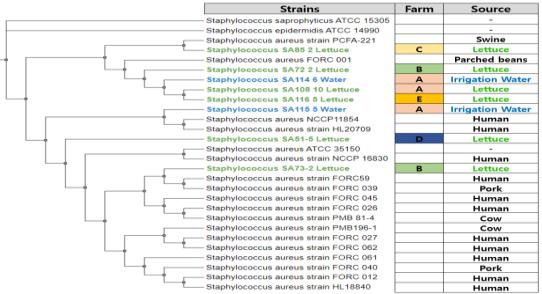 [Genome-based phylogenetic analysis of S. aureus strains isolated from lettuce and irrigation water]
[Genome-based phylogenetic analysis of S. aureus strains isolated from lettuce and irrigation water]